What are inflection points, and how do you find them? This article explains what you need to know about inflection points for the AP Calculus exams.
Inflection Points and Concavity
An inflection point is a point in a graph at which the concavity changes.
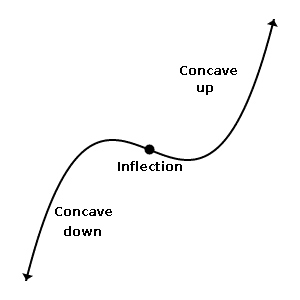
So let’s talk a little about concavity first.
Concavity
Concavity is about curving.
We say that a function y = f(x) is concave up (CU) on a given interval if the graph of the function always lies above its tangent lines on that interval. In other words, if you draw a tangent line at any given point, then the graph seems to curve upwards, away from the line.
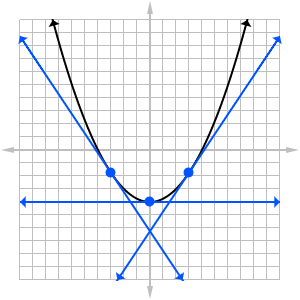
Conversely, a function is concave down (CD) on a given interval if the graph of the function always lies below its tangent lines on that interval. That is the graph seems to curve downwards, away from its tangent line at any given point.
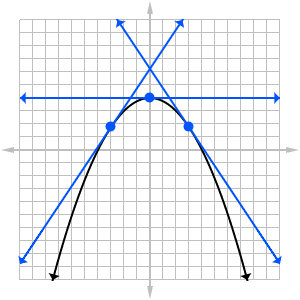
This saying may help you to remember which one is which: Concave up looks like a cup; concave down looks like a frown.
Inflection
Some functions, like the parabolas shown above, only have one kind of concavity. But more interesting functions may have a mixture of the two. The graph might be concave down in one interval and concave up in the next. Some functions even switch back and forth between concave up and concave down infinitely many times!
Any point at which concavity changes (from CU to CD or from CD to CU) is call an inflection point for the function.
For example, a parabola f(x) = ax2 + bx + c has no inflection points, because its graph is always concave up or concave down.
Inflection Points and Derivatives
Inflection points may be difficult to spot on the graph itself. So we must rely on calculus to find them.
Basically, it boils down to the second derivative.
- If f '' > 0 on an interval, then f is concave up on that interval.
- If f '' < 0 on an interval, then f is concave down on that interval.
- If f '' changes sign (from positive to negative, or from negative to positive) at a point x = c, then there is an inflection point located at x = c on the graph. In particular, the point (c, f(c)) is an inflection point for the function f.
Here’s a good rule of thumb. Look for possible inflection points by setting f '' = 0. That’s because the only way for f '' to change signs is to pass through the “neutral territory” of 0 (well, assuming the change is continuous, anyway).
Why the Second Derivative?
So what’s so special about the second derivative that makes it the go-to tool for concavity and inflection?
It all has to do with change — in this case, the changing slope of a graph as it curves upward or downward.
In order for the graph to be concave up, it must always increase slope as it progresses from left to right. Now remember, the first derivative measures slope. So f ' must be increasing whenever the graph is concave up. The final piece of the puzzle is the observation that increasing functions have positive derivatives. Therefore, the derivative of f ', that is, f '', must be positive!
Analogously, if the graph is concave down, then f ' must be a decreasing function. Hence, concave down means that f '' must be negative.
Finding Inflection Points
Let’s see by example how to locate the inflection points of a graph. Along the way, we’ll find out where the function is concave up and concave down.
Let ![]() . Find all points of inflection and intervals of concavity for f.
. Find all points of inflection and intervals of concavity for f.
Solution
Our first task is to find the first and second derivatives.

Next, set the second derivative equal to zero and solve. Because f '' is a polynomial, we have to factor it to find its roots.

There are three solutions, x = 0, 4, and -3. These are not necessarily all going to be inflection points, though! We have to find out how the concavity changes from interval to interval first.
Let’s set up table to figure out what happens in each interval. Within each interval, choose a sample point to plug into f '' to determine the concavity.
| Interval | Sample | f '' | Concavity |
|---|---|---|---|
| (-∞, -3) | -4 | 128 (> 0) | CU |
| (-3, 0) | -1 | -10 (< 0) | CD |
| (0, 4) | 1 | -12 (< 0) | CD |
| (4, ∞) | 5 | 200 (> 0) | CU |
Therefore, the function is concave up on (-∞, -3) U (4, ∞). It’s concave down on (-3, 0) U (0, 4). Notice that there is no change in concavity at x = 0.
That means that the only inflection points are at x = -3 and 4. Plug each of those points into the original function f(x) to find their corresponding y-coordinates. (A calculator can help out greatly here!)
- f(-3) = -33.55
- f(4) = -138.67
Thus the two inflection points for this function are: (-3, -33.55) and (4, -138.67). Let’s take a look at the graph and see if we can spot how the concavity changes at those points.
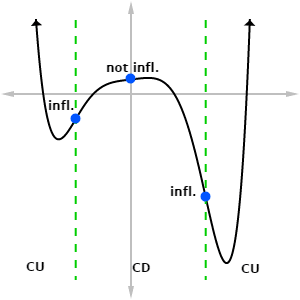
Summary
- An inflection point is a point on the graph of a function at which the concavity changes.
- Points of inflection can occur where the second derivative is zero. In other words, solve f '' = 0 to find the potential inflection points.
- Even if f ''(c) = 0, you can’t conclude that there is an inflection at x = c. First you have to determine whether the concavity actually changes at that point.
For more information about concavity, inflections, and other related topics, check out AP Calculus Review: Functions and their Graphs

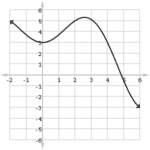



Leave a Reply